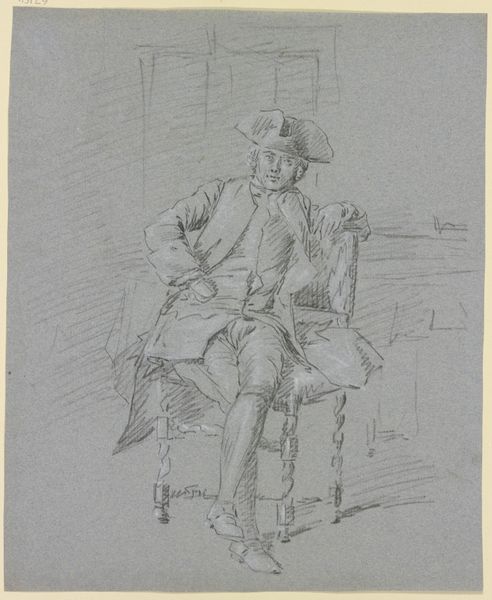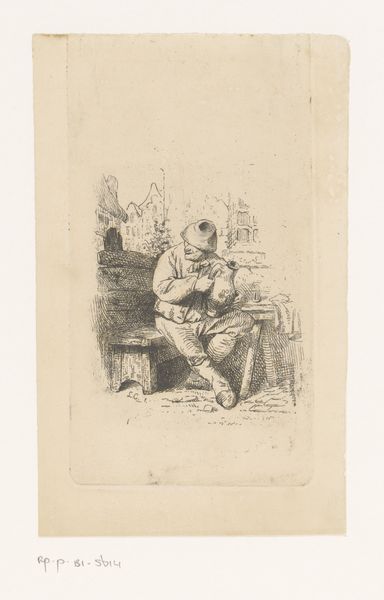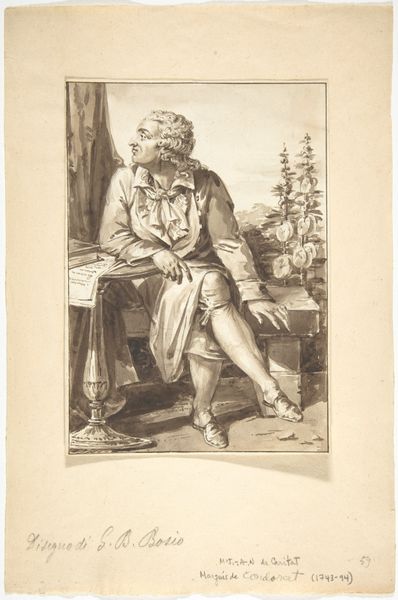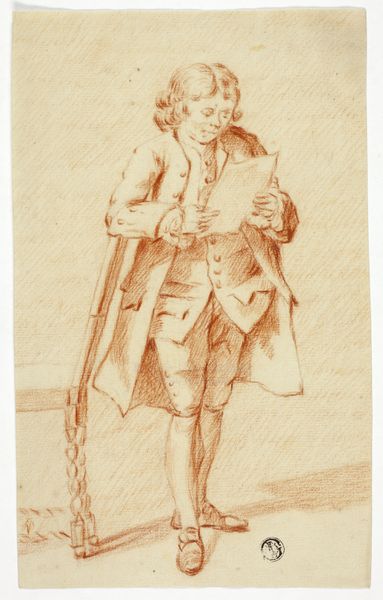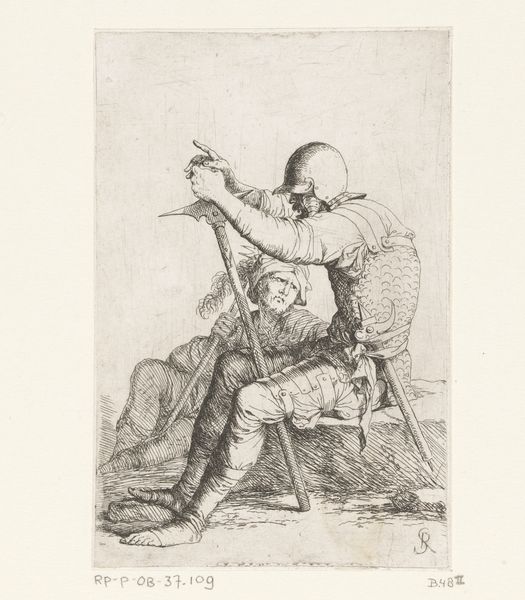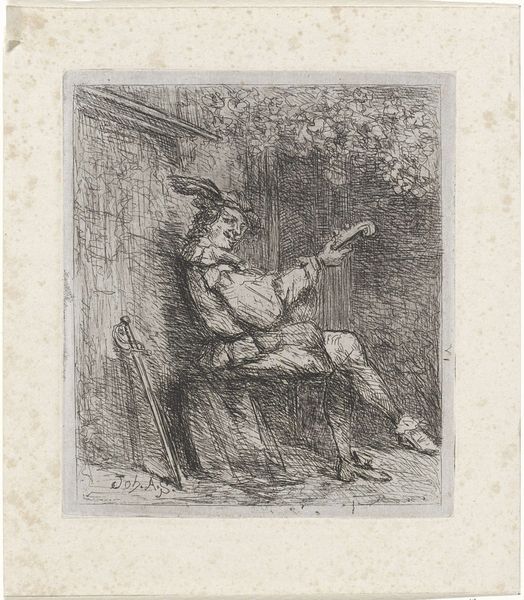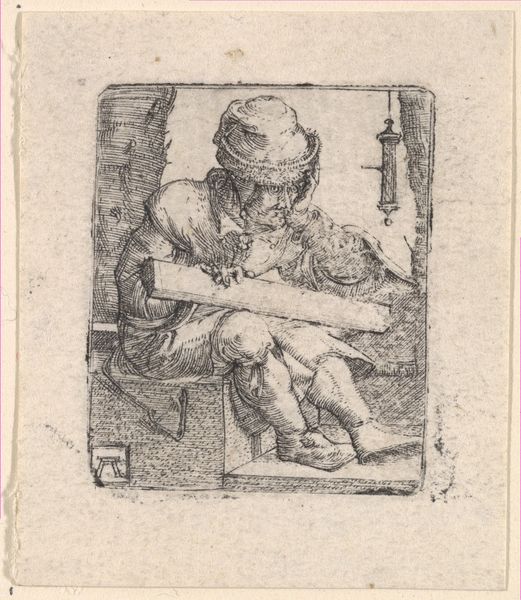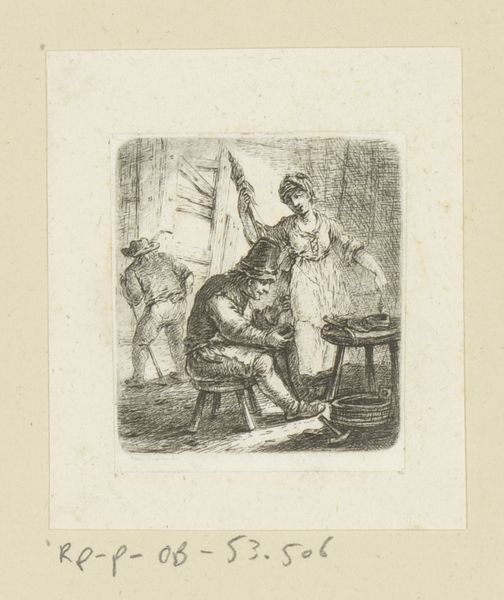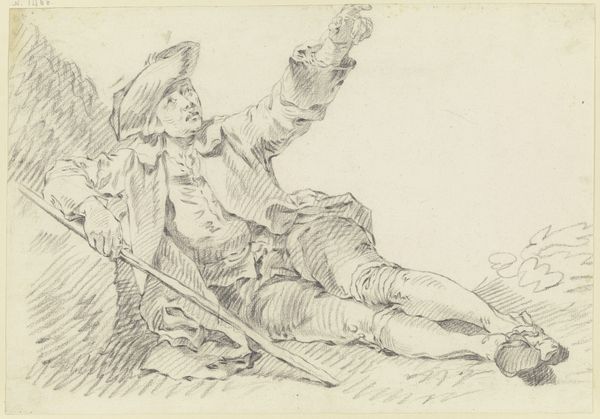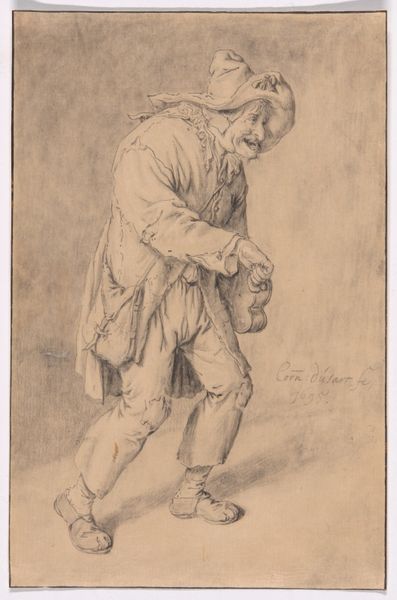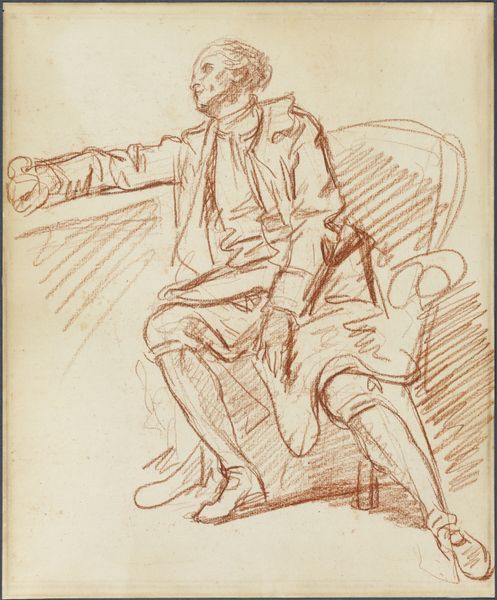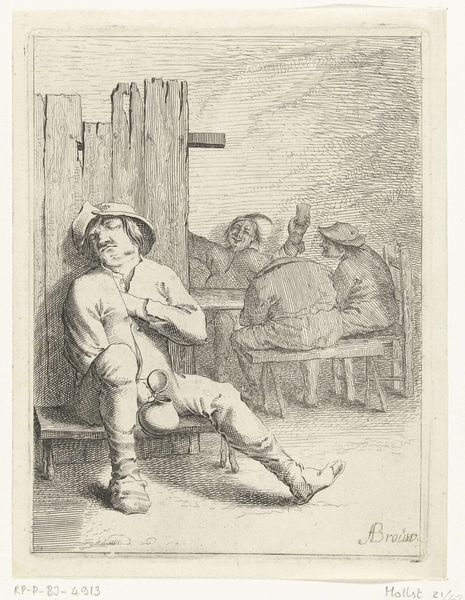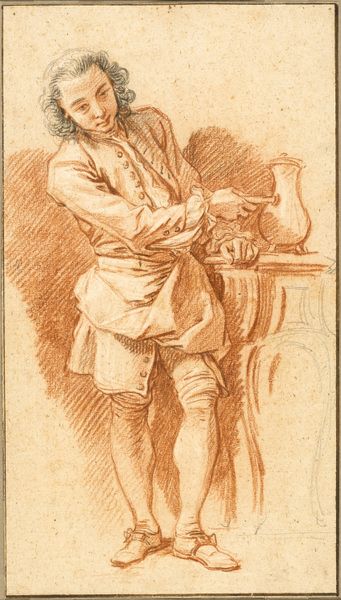
Adelsmand fra Chr. IV's tid sidder og læser et brev 1860 - 1864
0:00
0:00
drawing, ink, pen
#
landscape illustration sketch
#
drawing
#
toned paper
#
light pencil work
#
mechanical pen drawing
#
pen sketch
#
pencil sketch
#
personal sketchbook
#
ink
#
pen-ink sketch
#
sketchbook drawing
#
pen
#
genre-painting
#
history-painting
#
sketchbook art
Dimensions: 202 mm (height) x 154 mm (width) (bladmaal)
Curator: This is "Adelsmand fra Chr. IV's tid sidder og læser et brev," which translates to "Nobleman from Christian IV's Time Sitting and Reading a Letter," a pen and ink drawing created by Wilhelm Marstrand between 1860 and 1864. Editor: Immediately, I’m struck by how informal the scene is, almost domestic. It gives an interesting contrast with the nobleman's formal attire. Curator: Indeed. Marstrand was fascinated by Denmark's Golden Age and frequently depicted historical scenes and figures. This drawing, though a quick sketch, gives insight into how the artist engaged with the past. Christian IV’s reign was a time of great prosperity and cultural flourishing. Editor: Looking at the composition, the play of light from the window is lovely. But who has the power to read and write, and thus dictate history, at that time? The window is an apt reminder of how the past filters through certain lenses. This one privileges wealth, status, and masculinity, if the nobleman is meant to represent an individual reading a letter to himself. Curator: That’s a critical point. Marstrand was working in a period of rising nationalism. These historical portrayals helped construct a national identity and he was drawing inspiration from source materials held in museums and archives. How might we situate this within its historical frame? Editor: In the context of Danish nationalism, this depiction can be interpreted as both celebratory and perhaps subtly critical. Was the aristocracy actually serving society? Did they represent shared national values? These images contribute to the visual culture in which such questions can circulate, although they themselves rarely take a firm stand on an issue. The man’s face isn't particularly joyful either! Curator: That’s interesting. Marstrand often incorporated humor and irony into his paintings, and maybe there's an element of that at play here as well. This is perhaps a reflection on the past from a rapidly changing present in which the aristocracy’s role was continually being interrogated. Editor: Yes, a fleeting glimpse, both of history and a moment in the artist’s own thinking. A reminder that these visual records of national pride and power are, by necessity, personal acts of interpretation. Curator: Absolutely. Thank you for drawing attention to this artwork's ability to facilitate dialogue. It also speaks volumes about Denmark's place in broader Europe through commerce and politics during the era.
Comments
No comments
Be the first to comment and join the conversation on the ultimate creative platform.


